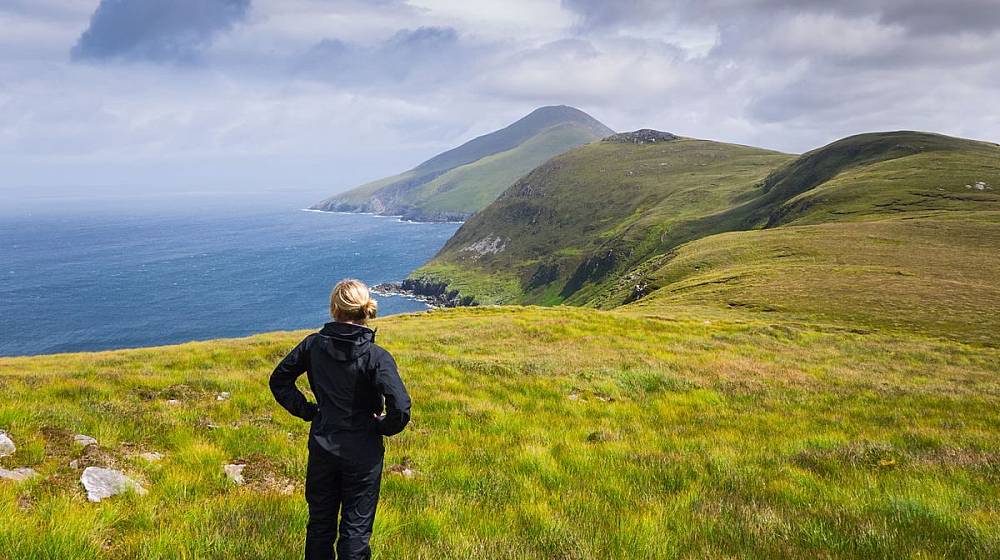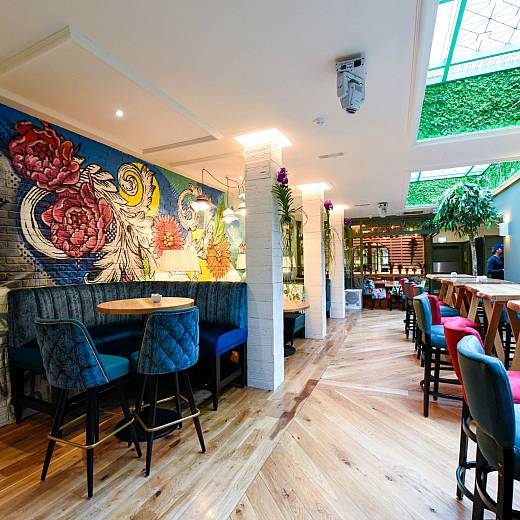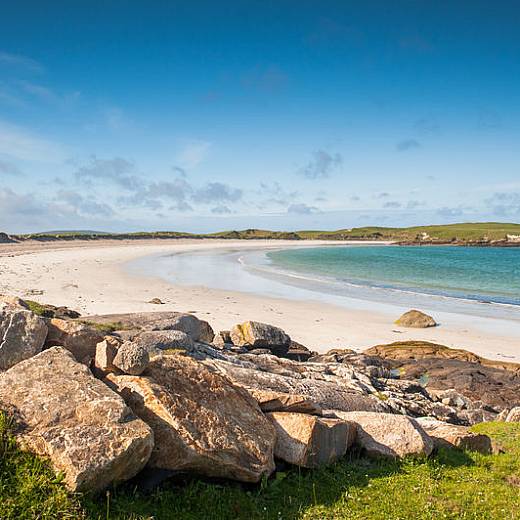The Wild Atlantic Way weaves along more than 2,500 km of Ireland’s west coast, but one of its most rewarding sections is the journey from Galway City north through Connemara, past the fjords of Mayo and on to Achill Island. This route passes some of the country’s most dramatic scenery – rugged mountains, serene bays, heritage towns and beaches that wouldn’t look out of place in the Caribbean – yet it can easily be explored in a few days.
The Connacht Hotel in Galway is the perfect starting point for this coastal adventure. Situated on the Dublin Road close to the city centre, the hotel provides comfortable rooms, family‑friendly facilities and ample parking, making it a convenient base before you hit the open road. Whether you’re travelling by car or planning to cycle parts of the Great Western Greenway, staying in Galway allows you to enjoy the city’s energy at the beginning and end of your trip.
Below is a complete guide to the highlights between Galway and Achill Island. Distances are approximate and are based on Fáilte Ireland’s route segments: Connemara (Galway to Clifden, 176 km), Killary Harbour (Clifden to Westport, 165 km) and Clew Bay & Achill (Westport to Belmullet, 238 km)
.
Galway City: history and culture by the sea

Before leaving Galway, take time to explore the city’s historic waterfront. The most striking relic of medieval Galway is the Spanish Arch. Positioned on the left bank of the River Corrib, the arch dates back to 1584 and was an extension of the 12th‑century Norman town wall. Built by Wylliam Martin, it housed soldiers who guarded the quays, and its name refers to the merchant trade with Spain, whose galleons once docked here. Today the arch is a popular meeting point where locals gather to watch traditional hooker boats sail out of the harbour and buskers play music by the Long Walk. Wandering through the Latin Quarter, along Shop Street and across Eyre Square, gives a taste of Galway’s vibrant culture before you head west into Connemara.
The road to Clifden and the Sky Road

Leaving Galway on the N59, the scenery quickly transforms into boglands, lakes and mountain peaks. Connemara’s capital, Clifden, lies roughly 78 km away – about an hour’s drive. The town is famous for its arts scene, lively pubs and views of the Twelve Bens mountains. Clifden is also the gateway to one of Ireland’s most scenic drives: the Sky Road. This 16 km looped route begins and ends in Clifden and can be cycled or driven. It climbs onto a ridge overlooking Clifden Bay, Streamstown Bay and the islands of Inishturk and Turbot, offering panoramic Atlantic vistas and glimpses of Clifden Castle and an old coast‑guard station. Even a short detour up the Sky Road will reward you with photo‑worthy views.
A few kilometres beyond Clifden lies Derrigimlagh Bog, where Guglielmo Marconi built the world’s first permanent trans‑Atlantic radio station and where Alcock and Brown crash‑landed in 1919 after their historic non‑stop flight. These sites underscore Connemara’s role in pioneering communication and aviation.
Kylemore Abbey and Victorian Gardens
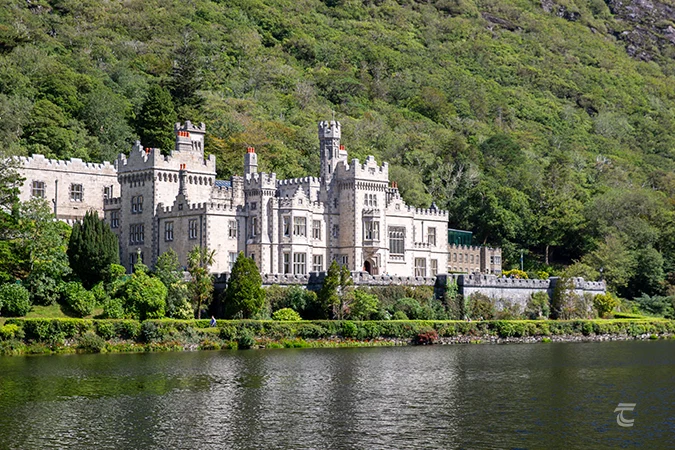
Continuing along the N59 past Letterfrack brings you to Kylemore Abbey, nestled beneath the slopes of the Twelve Bens. The estate began life as a castle in 1867 when English MP Mitchell Henry built a 40,000 sq ft Gothic mansion with 70 rooms. Henry also constructed a romantic neo‑Gothic church in memory of his wife (completed in 1877). Since 1920 the property has been home to a community of Benedictine nuns, who ran a boarding school until 2010. Visitors today can tour the abbey’s restored rooms, stroll through the six‑acre Victorian walled garden and enjoy tea in the café. It’s one of the most photographed buildings in Ireland and a must‑see on the road north.
Killary Harbour and the Doolough Valley

North of Kylemore, the scenery becomes even more rugged. The village of Leenaun sits at the mouth of Killary Harbour, Ireland’s only fjord, where steep mountains plunge into a narrow 16 km inlet. A side‑trip west along the R335 leads through the hauntingly beautiful Doolough Valley. Framed by Mweelrea Mountain and the Sheeffry Hills, this glacial valley is known for its sombre history: during the famine in March 1849, hundreds of destitute tenants from Louisburgh walked 19 km through snow to Delphi Lodge seeking relief; many perished in what became known as the Doolough Tragedy. A simple stone cross memorialises those who died. Today the road is part of the Wild Atlantic Way and offers spectacular views – a powerful reminder of Ireland’s history amid natural splendour.
Westport: heritage town at the foot of Croagh Patrick

After the dramatic mountains of Connemara, the route enters County Mayo and the welcoming town of Westport. Designated a Heritage Town, Westport has tree‑lined boulevards and stone bridges over the Carrowbeg River. Its multi‑coloured shopfronts, charismatic cafés and unique restaurants make it one of Ireland’s most popular destinations. Highlights within town include Westport House – an 18th‑century stately home with a pirate‑themed adventure park – and the Quay area, which buzzes with restaurants overlooking Clew Bay.
Climbing Croagh Patrick
Westport sits under the shadow of Croagh Patrick, Ireland’s holy mountain. The peak has been a place of worship for more than 3,000 years; pagan Celts honoured the sun god Lugh here, and in AD 441 St Patrick fasted for 40 days on the summit. The climb takes two to three hours, but recent improvements have added stone steps near the top, making the ascent less gruelling. On a clear day the summit rewards hikers with sweeping views over Clew Bay ad its 365 islets.
Westport activities
Westport offers many other activities. You can cycle or walk the first section of the Great Western Greenway, hire a kayak to explore the Clew Bay Blueway, tee off at Westport Golf Club or browse artworks at the Custom House Studios. If you have children, the Pirate Adventure Park at Westport House delivers fairground thrills. In the evening, live traditional music fills pubs around Bridge Street, reminding visitors that Mayo’s cultural heritage is as vibrant as its scenery.
Newport: viaducts, dark skies and local charm

From Westport the Wild Atlantic Way follows the coast to Newport, a heritage town located at the heart of the Great Western Greenway. The town sits on the shores of Clew Bay with the Brown Oak River running through it, and an architecturally impressive railway viaduct dominates the skyline. Newport is the ancestral home of Princess Grace of Monaco and exudes a sincere charm that matches the friendliness of its people
There’s more to Newport than pretty views. Because of its proximity to Ireland’s only gold‑tier International Dark‑Sky Park, the town hosts stargazing safaris and astro‑photography workshops. Anglers can cast a fly into the rich waters of the river, lake or sea, while adventure‑seekers can rent bikes or stroll along the 19th‑century viaduct and follow the former railway line through the countryside. Newport’s unique built heritage includes St Patrick’s Church, which houses the last stained‑glass window created by artist Harry Clarke, as well as a 15th‑century Dominican friary and Carrighowley Castle. Foodies should sample the town’s award‑winning black pudding and putóg.
The Great Western Greenway and Mulranny

One of the signature experiences in Mayo is cycling or walking the Great Western Greenway. Ireland’s first greenway follows a disused railway line 49 km from Westport to Achill Sound, passing through Newport and the coastal village of Mulranny. The trail is entirely off‑road, making it safe for families, and provides magnificent views of Clew Bay, Clare Island, Croagh Patrick and the Nephin Beg Mountains. Bike‑hire shops operate in Westport, Newport and Mulranny, and you can choose to cycle one section and return by shuttle. Mulranny itself is a delight. This seaside village has been named Ireland’s Best Destination for Responsible Tourism and Ireland’s Best Small Tourism Town, and it is officially recognised as a European Destination of Excellence. Friendly locals and a pristine environment give Mulranny a laid‑back vibe. The village overlooks Clew Bay and is a popular stop on the Greenway; pedal‑assisted and regular bikes are available to rent. Nearby walks include the Look Out Hill loop, a 6 km trail taking in three conservation areas and Ireland’s largest national park, with the chance to spot rare Old Irish goats. The Atlantic Drive begins in Mulranny and leads around the Currane Peninsula and across Achill Island, offering a challenge to count all of Clew Bay’s 365 islands
Achill Island: wild beauty at the end of the road

The final stage of this journey leads onto Achill Island, Ireland’s largest offshore island, via the Michael Davitt Bridge at Achill Sound. It takes around two hours to drive from Galway to Achill, but plan longer if you want to stop along the way. Achill’s unspoiled beauty makes it a highlight of the Wild Atlantic Way. Over half of the island is within the Gaeltacht, and communities here still speak Irish daily
.
What to see and do on Achill
Atlantic Drive and Keem Bay– Follow the Atlantic Drive around the coast for dramatic scenery. The road hugs the slopes of Croaghaun Mountain, where quartzite cliffs rise more than 600 m above the sea, and leads to Keem Bay, a horseshoe beach with soft white sand and turquoise water. Keem Bay has been named the UK and Ireland’s best wild swimming spot, and the views from the cliffs are breathtaking.
Great Western Greenway and outdoor pursuits – The Greenway ends at Achill Sound. Cyclists can continue around the island on quiet roads, while hikers tackle trails up Slievemore Mountain or along the Minaun Cliffs. Achill is a hub for surfing, kitesurfing, sea kayaking and fishing. You can circumnavigate the island by car in about two hours
, but to fully experience it plan at least two days.
Heritage sites – Visit the Deserted Village at Slievemore, where stone cottages abandoned during the famine still stand, or explore the 15th‑century Kildavnet Castle built by pirate queen Grace O’Malley. The Irish-language culture is evident everywhere, from bilingual road signs to pubs where traditional music spills out in the evenings. Achill’s natural beauty also includes clean Blue Flag beaches such as Keel and Silver Strand, bog‑covered mountains and clear waters rich with marine life. It was recently named one of the Irish Times’ Five Best Places to Holiday in Ireland, a testament to its timeless allure.
Relax at The Connacht Hotel
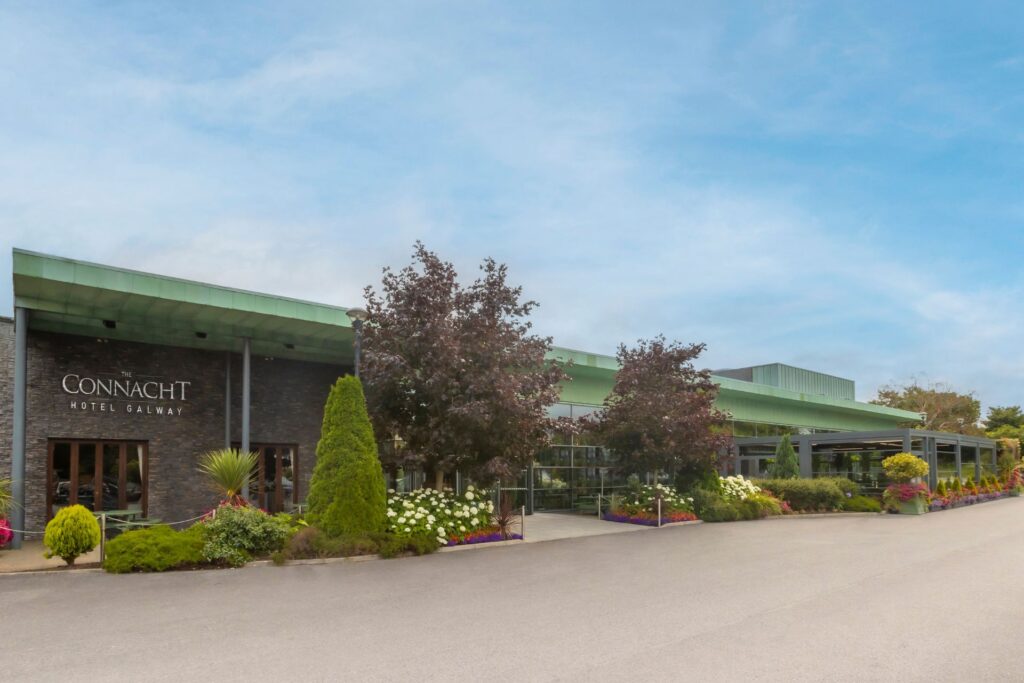
By the time you reach Achill, you’ll have driven through some of Ireland’s most awe‑inspiring landscapes: the medieval streets of Galway, the mountains and bays of Connemara, the fjords and valleys of Mayo, and the wild shores of Achill. Each stop offers a different slice of Irish life – from centuries‑old abbeys and famine memorials to bustling market towns and remote beaches. After such an epic journey, you’ll appreciate the comfort and hospitality awaiting you back at The Connacht Hotel. With modern rooms, leisure facilities (including a 20‑metre swimming pool and gym) and on‑site dining, the hotel makes for a relaxing end to your Wild Atlantic Way adventure. Its location in Galway means you can easily explore the city’s attractions or venture out again along other sections of the Wild Atlantic Way. Whether you complete the route in a single day or spread it over several days with walks, cycles and swims, travelling from Galway to Achill Island reveals the untamed spirit of Ireland’s west. Base yourself at The Connacht Hotel and let the Wild Atlantic Way unfurl before you.


